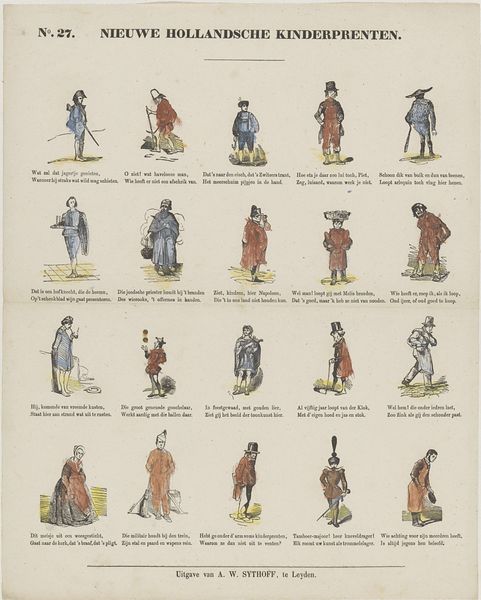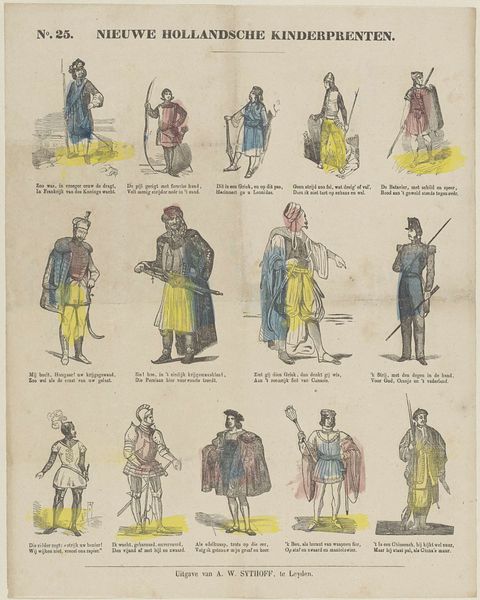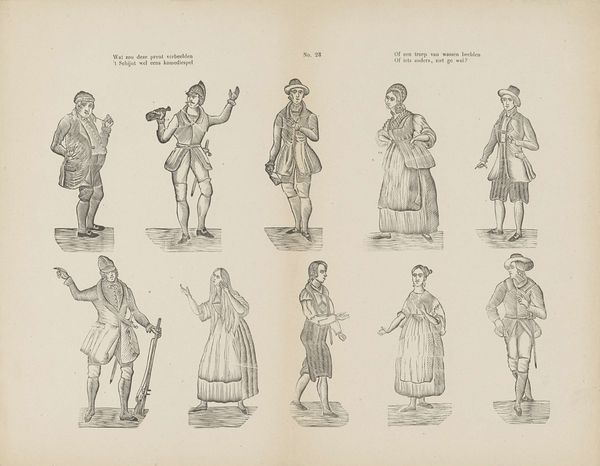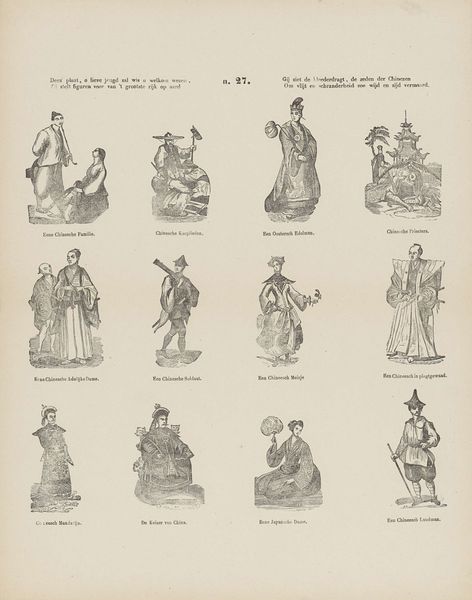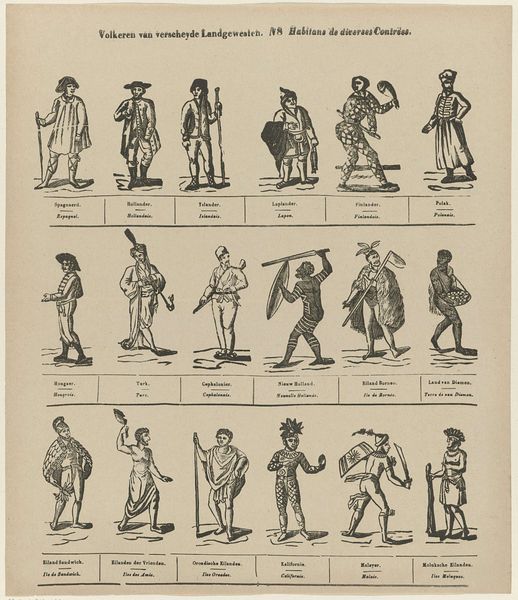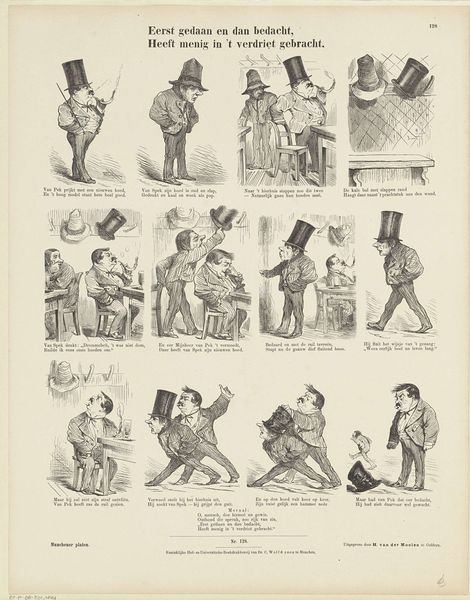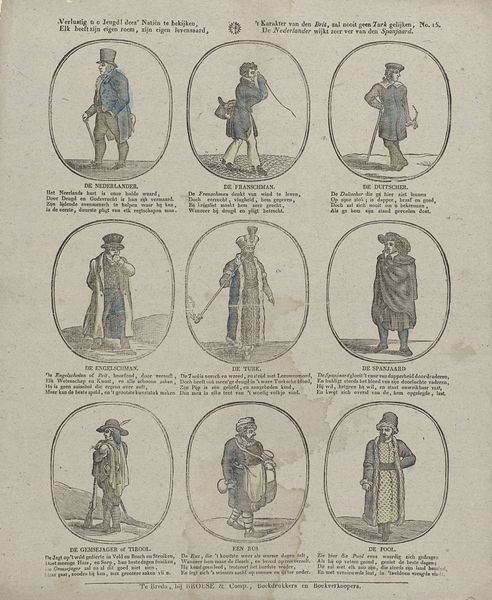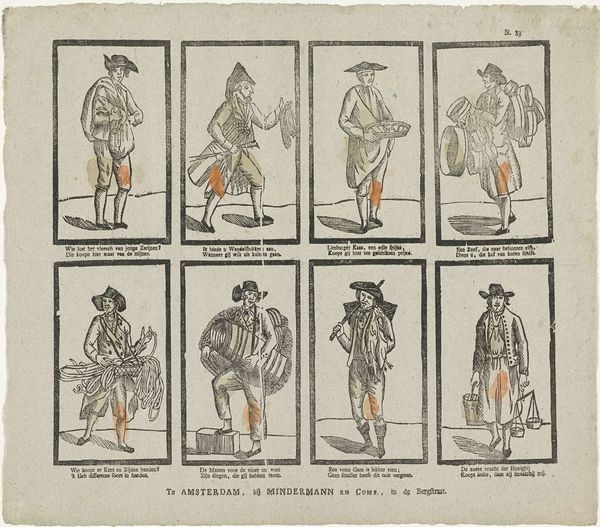![Ziet hem op hooge laarzen stappen [(...)] by Albertus Willem Sijthoff](/_next/image?url=https%3A%2F%2Fd2w8kbdekdi1gv.cloudfront.net%2FeyJidWNrZXQiOiAiYXJ0ZXJhLWltYWdlcy1idWNrZXQiLCAia2V5IjogImFydHdvcmtzL2ZjMGYxYTJlLTBhYmEtNDc3OS04ZWExLTkwYmVjMWZhMTIzOS9mYzBmMWEyZS0wYWJhLTQ3NzktOGVhMS05MGJlYzFmYTEyMzlfZnVsbC5qcGciLCAiZWRpdHMiOiB7InJlc2l6ZSI6IHsid2lkdGgiOiAxOTIwLCAiaGVpZ2h0IjogMTkyMCwgImZpdCI6ICJpbnNpZGUifX19&w=3840&q=75)
drawing, graphic-art, print
#
portrait
#
drawing
#
graphic-art
#
narrative-art
# print
#
genre-painting
Dimensions: height 413 mm, width 312 mm
Copyright: Rijks Museum: Open Domain
Curator: Let's turn our attention to "Ziet hem op hooge laarzen stappen [(...)]", a print by Albertus Willem Sijthoff, likely created sometime between 1861 and 1929. It’s held in the collection of the Rijksmuseum. Editor: It strikes me as an inventory of character types—a little theatrical, almost like stock characters in a play. Is this some form of typology? Curator: In a way, yes. These kinds of prints, often distributed as broadsides, used images and simple verses to disseminate social narratives. The symbolic language here, even down to the high boots in the title, denotes social standing. Think about the aspirations and values communicated through such easily reproducible images. Editor: Right. The printing itself—look at the thinness of the lines, the repetition… clearly a commercial endeavour, mass-produced. The material conditions dictate the artistic choices; inexpensive paper, easily etched plates. The goal wasn’t necessarily aesthetic perfection but accessibility and distribution. Were these prints hand-colored, usually? Curator: Sometimes, though black and white was common to keep costs low. The monochrome emphasizes form and gesture. Each figure becomes a distilled symbol – the farmer, the soldier, the lady… Each possesses clear markers of their identity and role within the societal structure. Editor: It makes me wonder about the original consumer. Did children pore over these images, absorbing unspoken class expectations? Or were these intended more for the parents? It certainly is narrative art for educational means. Curator: Good question. It is interesting to consider how the relationship between printed image, literacy, and the construction of Dutch national identity might all be interwoven here. Editor: Absolutely, and examining the print this way opens up questions about artistic production, distribution, and how images were employed to build cultural understanding. Curator: Precisely. Seeing this work in light of the historical currents truly enriches our viewing experience.
Comments
No comments
Be the first to comment and join the conversation on the ultimate creative platform.
